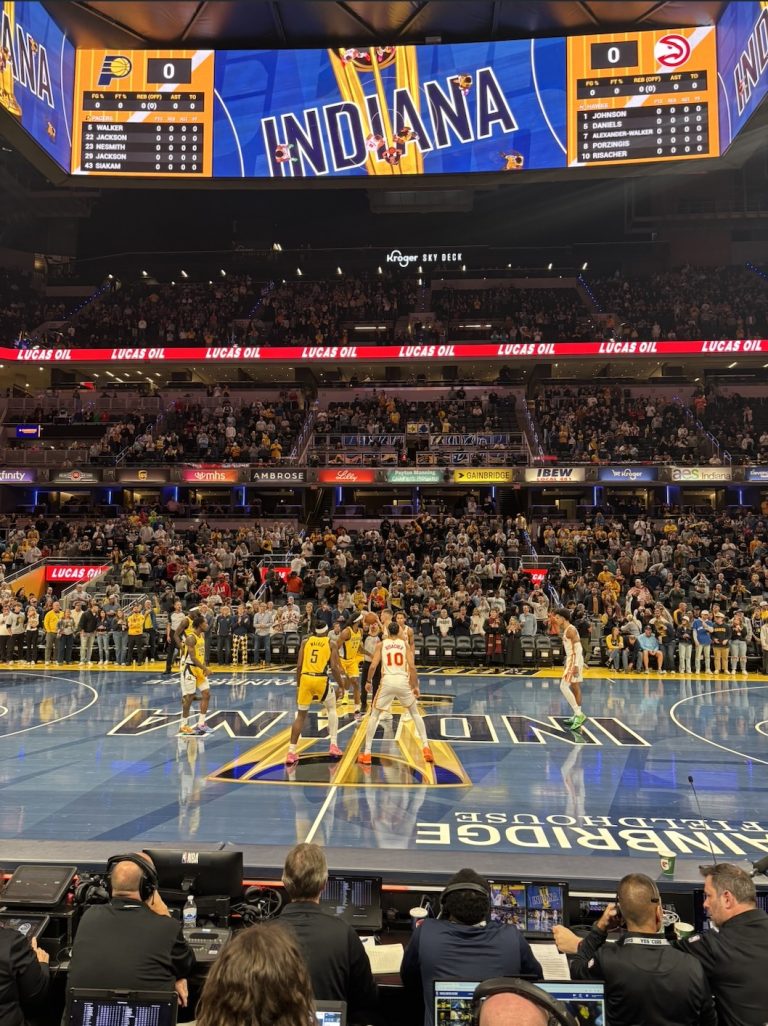
Focusing on English Baroque, the ensemble Echoing Air performed at the University of Indianapolis as part of the Faculty Artist Concert Series on Feb. 27 in the Christel DeHaan Fine Arts Center Ruth Lilly Performance Hall. The concert was entitled “The Harmonious Vagabond: The Music and Adventures of Scottish Countertenor John Abell” and featured faculty musicians Steven Rickards and Thomas Gerber.
The ensemble included countertenors Rickards and Nathan Medley, recorder players Jeffrey Collier and Keith Collins Gerber playing the harpsichord and Christine Kyprianides playing the viola da gamba and cello. As a traveling ensemble, Echoing Air spends time in many cities delivering performances and informances to students, according to Rickards and Gerber.
“The tour that we just did most recently down south had three concerts in it….the whole time we spent in Miami was…. [performing in] public schools, and I think some private schools, too,” Gerber said. “Mostly, they were underserved parts of the Miami area that don’t have a lot of arts funding, or their programs don’t have money, so the kids don’t get much music… So educationally, it was a very valuable [experience], I think for us, because most of us are teachers.”
The many pieces inspired by folk, English and French composers all were connected to the life of countertenor John Abell. The program followed the life and music of Abell as he traveled and integrated into Scotland, England and France.
The composers whose works were featured in the telling of Abell’s adventures included Simon Ives, an anonymous Scottish composer, anonymous composers, John Playford, Henry Purcell, Giovanni Draghi, Nicolas Derosier, François Couperin, Marin Marias, Daniel Purcell, an anonymous Irish composer and Abell himself.
Echoing Air used this concert as an educational experience with a concert structure, connecting the audience to an individual who modeled the life of a musician in the 1700s.
“I think what was kind of exciting about his life was that he was a guy who probably told us what life was like for a real performing musician back in the 1700s,” Gerber said. “He wasn’t well-known, he wasn’t rich. He was what most would have been like back then. He traveled from place to place and got jobs where he could get them.”
It took roughly a year to construct the concert, from researching who Abell was and picking pieces that Abell wrote or premiered, according to Rickards.
“It takes a year because it takes some digging to find information about these people. If it were Mozart we were talking about, it would be one thing,” Rickards said. “…But finding information out, [such as] the music that he would do…then it’s not just that. Things had to be changed in order for us to take that music and present it.”
The pieces performed at the beginning of the concert left senior human resource management major Lena Gehrke impressed by the unique style of music.
“As soon as the performers began, I was immediately blown away by the range of their voices,” Gehrke said. “It was nice to be introduced to not only a unique style of music, but also learn about the history and background of John Abell.”
The music in the concert was used to display an intimacy in music that people don’t always experience through the showcasing of a rarely-known artist, according to Rickards.
“It is beautiful music that we do. There is an intimacy in the music that we do….The whole point of what we try to do is unveil the past and make a connection with the past,” Rickards said. “When you think that things have changed a lot since the Renaissance and Baroque eras, the passions, love, hate, fear and longing all of those things that come from music are eternal.”
According to the UIndy website, opening after spring break on March 20 at 7:30 p.m. in the Ruth Lilly Performance Hall, “The Final Four: Basketball Meets Baroque” will feature the Indianapolis Baroque Orchestra.” This program will include the “Big Four” composers from the Baroque era. This program will include pieces such as Telemann’s Double Flute Concerto in G and selections from Handel’s Water Music.






